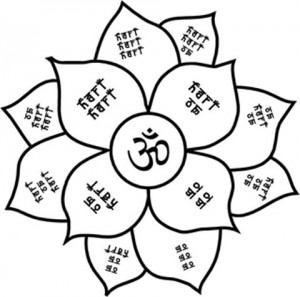Mandalas of Sacred Sound, Sound Flowers in a Garland for God

Mandalas of Sacred Sound, Sound Flowers in a Garland for God
By Robin Armstrong
Percussive chanting, mandalas of sacred sound, creating sound flowers laid in prayer at the feet of God, represents a new and energizing form of prayer and spiritual communion. This is a type of prayer that cannot be done alone. It is powerful and alive. The more people there are, the better it gets. One develops a strong sense of Unity or Oneness through diversity.
We take a visual mandala, like the eightfold path of the I Ching or its four noble truths and then we assign names of God to the different sections. Sometime we will take a mandala based on three or five or six or whatever. We sit in a circle and divide the circle up into sections of the mandala. Each section then chants its appointed name of God. The diverse names of God then are sung at the same time, merging into each other and dissolving one’s individual identity into that of the whole collective.
This form of chanting is based on rhythm more than harmony. We bless the rhythm with God’s name and then we in turn are absorbed into the rhythm and sound of God all around us. This type of chanting is powerful, fulfilling and fun!
As we chant we get the sense of creating a sound temple or sound flower before God. As different layers of chanting emerge, it is as if we are adding a extra stories or levels to our temple. The overwhelming presence of the sound of God’s name resonates around us and within us. It wipes out extraneous thoughts and forces one to Be in the moment, One with the moment. As thoughts are erased, new dimensions of consciousness and love emerge.
In addition to the basic power of the chanting, the more one feels for God and God’s names while chanting, the greater the bhava or devotional emotion will be and the greater the rapture experienced. Chanting is the most direct way to find God in this Age of Kali. Chanting helps one to gain control over the wandering mind so that subtler experiences can arise, and we can there by improve our relationship to God and Self.
Chanting the I Ching
Here is an example of a sound mandala, chanting Hari Om in the form of the I Ching. Eight different rhythms are chanted along with a moving rhythm that integrates all of the eight. A type of trance forming congregational chanting develops. The group is led by Robin Armstrong
